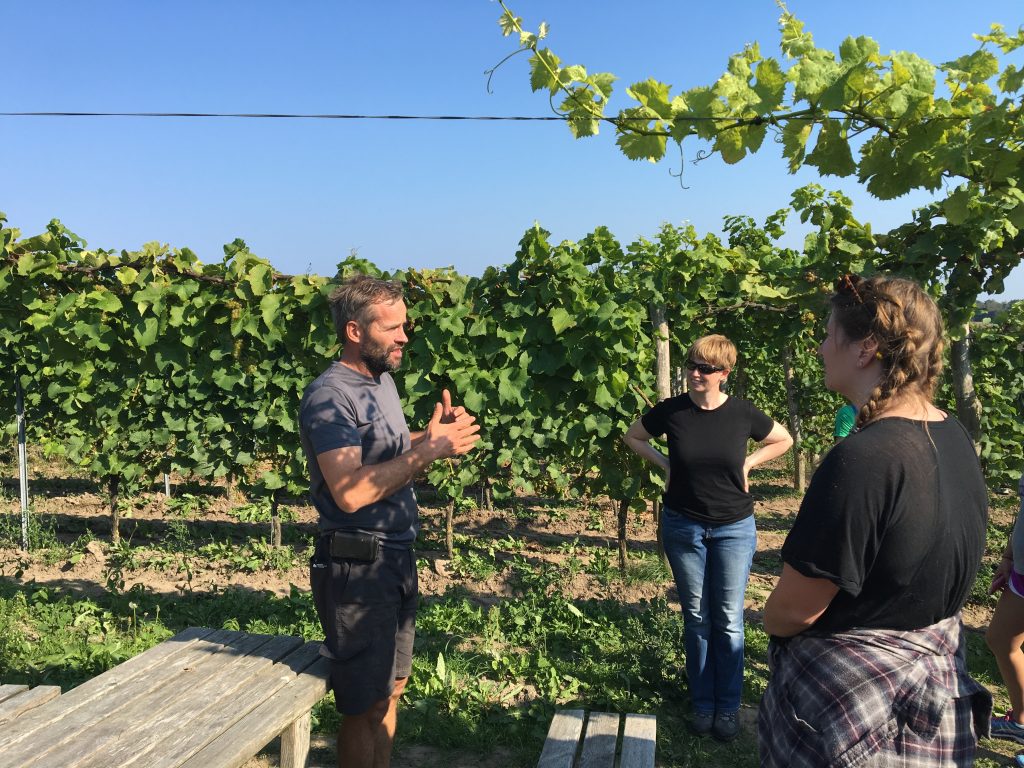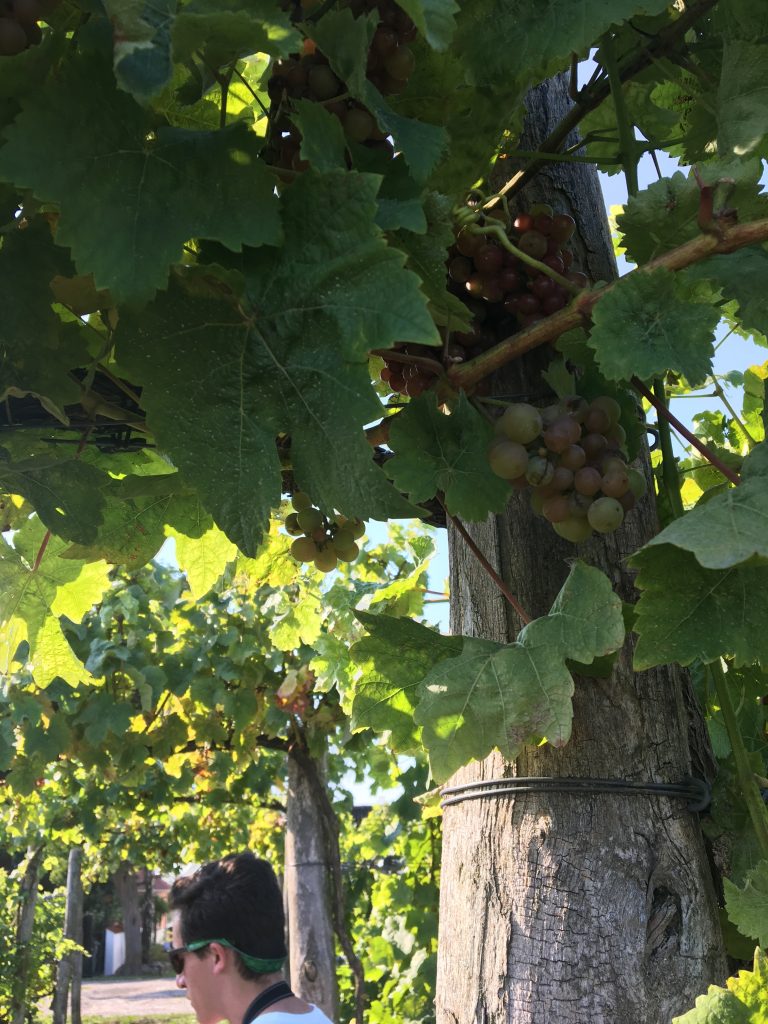When you think of places known for its wine, what comes to mind? Italy…France…maybe even California? Well because of climate change, Northern Denmark and its inhabitants are hoping to create Europe’s next famous wine country. My professor brought us to Ørnberg Vineyard to investigate.
A region that was once covered by glaciers during the last ice age, Northern Zealand (the island where Copenhagen is located) is now home to a selection of vineyards. The region, still too cold to produce red wine, is becoming more and more famous each year for its production of white wines and sparkling wines. As each summer becomes warmer and longer in Denmark, the quality of the wine increases. The vineyard stretches 3.3 Hectares and is hoping to expand to over 5 within the next few years. Their goal is to produce 15,000-20,000 bottles a year. Due to the record heat and record length of the summer, this years grapes are expected to produce some of the best tasting wine in the short history of the vineyard.
Pictured above is one of the co-owners of the vineyard. He has big dreams for the Danish wine country and speaks to us about his intentions to not only grow his vineyard, but help with the growth of the other vineyards in the area. His goal is to create a Danish wine country that will grow tourism in the area. He also told us about the rich quality of the soil. The mixture of soil and clay holds rich minerals that allow for a superb tasting wine. He explained to us that they rarely water the grapes because overwatered grapes lead to watered down wine.
We then moved inside to taste a few of the wines. Those we tasted were from the summer of 2015, a relatively cooler summer for this new era of climate change. The cooler summer temperatures meant a lower quality of wine. The first two we tasted were relatively mild, but were not liked by most of the students. The third wine, a sweet dessert wine made from fallen grapes, introduced a cool new concept to our class. The vineyard tries to ensure that no grapes go to waste, including those that fall to the ground before harvesting. These immensely sweet grapes are turned into a white dessert wine. Pictured above are the canisters used in the fermenting of the grapes. The owner explained that in order to grow his vineyard, he hopes to increase the amount of fermentation chambers and expand this part of the vineyard.
So besides the extravagant allure of wine and vineyards, why am I sharing this with you all? When change is introduced into the ecosystem of any species they have one of two choices: adapt or perish. While the word “perish” may sound a bit extreme in our case and in the case of the human race, the vineyard is a prime example of how people have begun to adapt to this warming climate. With a melting arctic and a warming Scandinavia comes the need to adapt our economies to the new world we are inhabiting. If industrial processes continue as they are today, the need to adapt to a changing climate is going to become increasingly inevitable.





